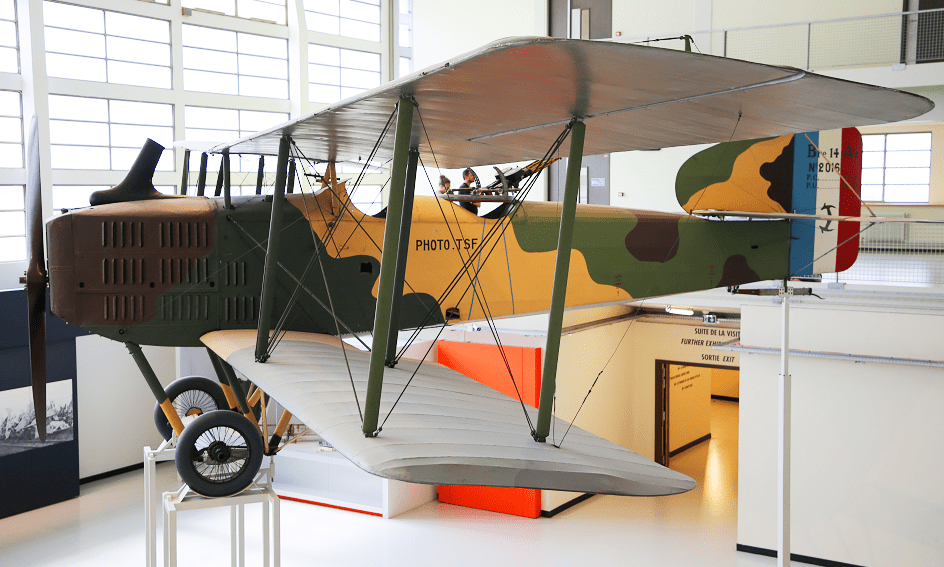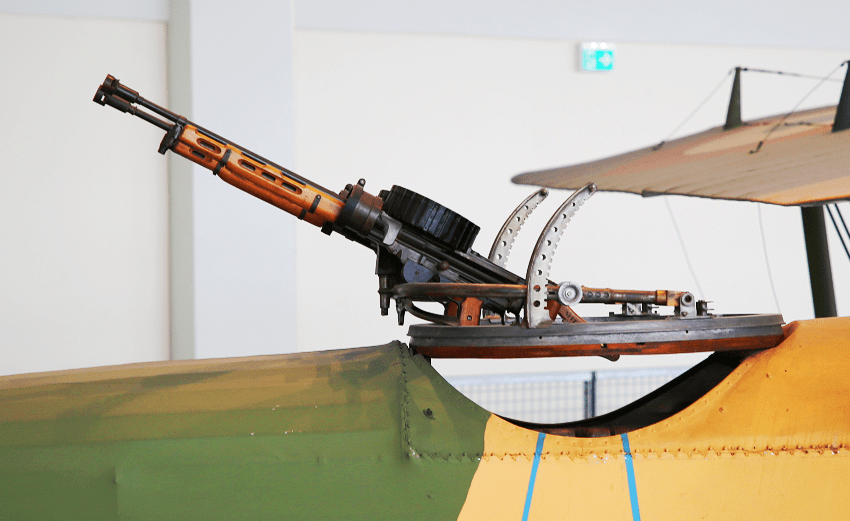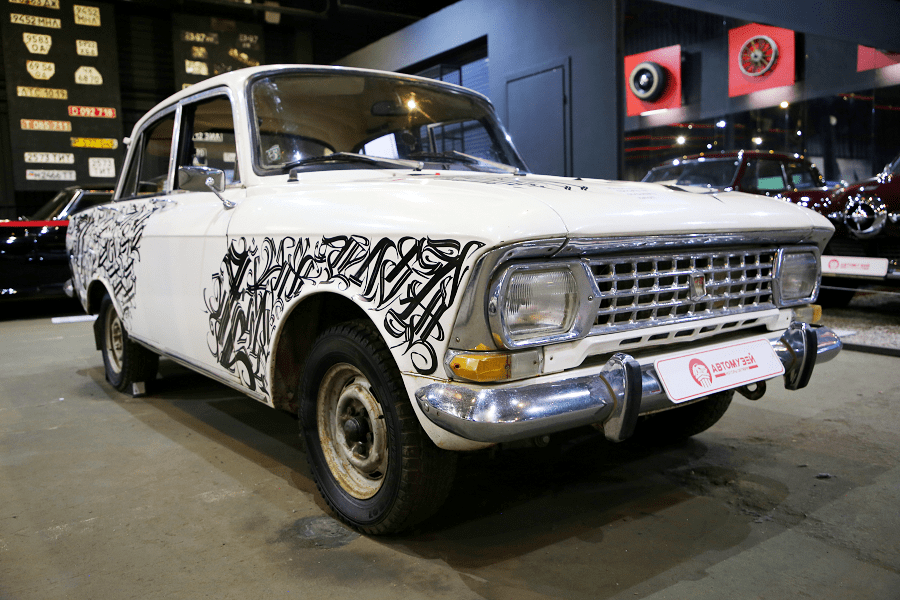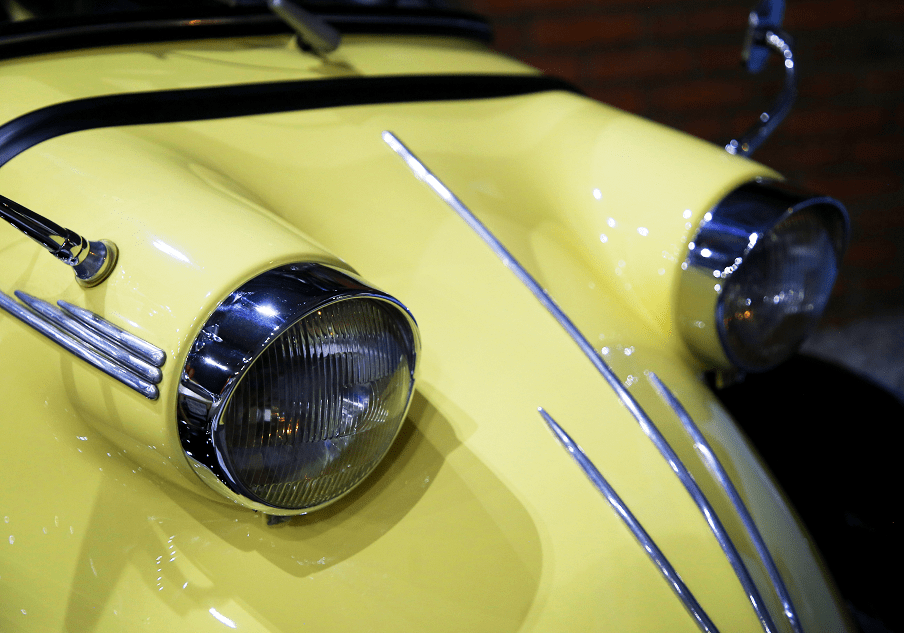Bréguet XIV
The Bréguet XIV (or Bréguet 14) was a French biplane bomber and reconnaissance aircraft of World War I. It was built in very large numbers and production continued for many years after the end of the war.
The Bréguet 14 was among the first mass-produced aircraft to use large amounts of aluminium, rather than wood or steel, in its structure. This allowed the airframe to be both lighter and stronger, in turn making the aircraft fast and agile and it was able to outrun some contemporary fighters.
The Bréguet 14 was used in large numbers from May 1917 onwards, and at its peak equipped at least 71 escadrilles, and was deployed on both the Western Front, where it participated in number major actions in which it typically acquitted itself well, and in the east, on the Italian front.
For its actions during the Battle of the Lys, the Section Artillerie Lourde, equipped with the type, received a citation and was further lauded for its actions during the Allied counter-attack to the German spring offensive. On 9 July 1918, Capitaine Paul-Louise Weiller shot down two enemy aircraft during one sortie while flying the type.
Following its introduction by the French, during 1918, the Bréguet 14 was also ordered by the Belgian Army (40 aircraft) and the United States Army Air Service (over 600 aircraft). Around half the Belgian and U.S. aircraft were fitted with Fiat A.12 engines due to shortages of the original Renault 12F. Prior to the Armistice of 11 November 1918, the Bréguet 14 was typically assigned to serve in both reconnaissance and bombing roles. By the end of the conflict, the type was reportedly responsible for having dropped over 1,887,600 kg (4,161,400 lb) of bombs.
Country: France
Year: 1917
Crew: 2
Length: 8.870 m (29 ft 1 in)
Powerplant: Renault 12Fcx V-12
Power: 300 HP (220 kW)
Max speed: 195 km/h (121 mph, 105 kn)
Ceiling: 5,000 m (16,000 ft)
Weight: 1,017 kg (2,242 lb)
Armament: 1 × fixed Vickers (7.7 mm) machine gun + 2 × flexible Lewis Gun (7.7 mm) + 355 kg (783 lb) of bombs (115 mm)














